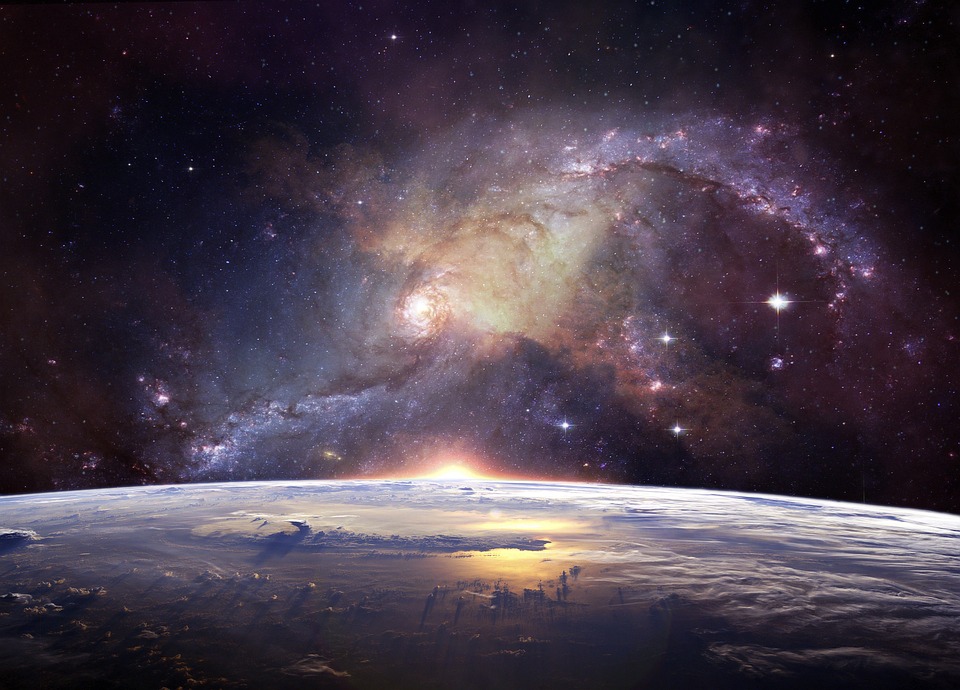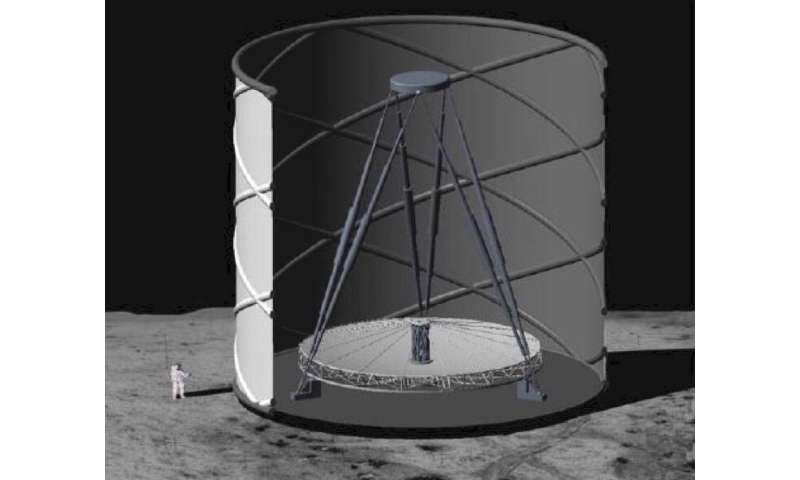Mothballed on NASA’s shelves were the plans to view stars 13 billion years in the past. Now, a group of astronomers from the University of Texas at Austin want to dust off ideas for a moon-based telescope and try to put them to good use.

The project was first tabled more than a decade ago because we just didn’t have enough science on the earliest stars at that point. It was initially coined the Lunar Liquid-Mirror Telescope (LLMT) when it was first proposed in 2008 by a team at the University of Arizona, and it would feature a liquid mirror telescope operating from the surface of the Moon, far away from any light pollution.
The proposed telescope, nicknamed the “Ultimately Large Telescope” by NASA Hubble Fellow and lead researcher Anna Schauer, would have a mirror 100 meters (300 feet) in diameter. It would operate autonomously from the lunar surface, receiving power from a solar power collection station on the moon relaying data to a satellite in lunar orbit, and from there, to Earth.
While the technology does not currently exist for such a device, and it would admittedly be very expensive, astronomers say the cost would be worth it (though the government might sing a different tune).
“Throughout the history of astronomy, telescopes have become more powerful, allowing us to probe sources from successively earlier cosmic times—ever closer to the Big Bang,” said professor and team member Volker Bromm, a theorist who has studied the first stars for decades. “The upcoming James Webb Space Telescope (JWST) will reach the time when galaxies first formed. But theory predicts that there was an even earlier time, when galaxies did not yet exist, but where individual stars first formed—the elusive Population III stars. This moment of ‘very first light’ is beyond the capabilities even of the powerful JWST, and instead needs an ‘ultimate’ telescope.”
Pop III stars, as they are somtimes called by astronomers, are composed entirely of primordial gas — helium, hydrogen, and very minute amounts of lithium and beryllium. This means that the gas from which these stars formed had not been ‘recycled’ (incorporated into, and then expelled) from previous generations of stars, but was pristine material left over from the Big Bang.
Pop III stars are likely tens or 100 times larger than the Sun. They’re a class of giant, hot, and luminous stars thought to have existed in the primordial days of the universe. However, while researchers now strongly suspect that they do exist, we’ve never actually seen one — which is why the Ultimate Telescope would be useful.

Rather than coated glass, the telescope’s mirror would be made of liquid, as it’s lighter, and thus cheaper, to transport to the Moon. It would also be a spinning vat of liquid, topped by a metallic – and thus reflective – liquid (previous liquid mirror telescopes have used mercury). The vat would spin continuously, to keep the surface of the liquid in the correct paraboloid shape to work as a mirror.
The position of the telescope would be stationary, situated inside a crater at the Moon’s north or south pole. In order to study the first stars, the Ultimately Large Telescope would stare at the same patch of sky continuously, to collect as much light from them as possible.
“This moment of first light lies beyond the capabilities of current or near-future telescopes. It is therefore important to think about the ‘ultimate’ telescope, one that is capable of directly observing those elusive first stars at the edge of time.”
The telescope proposal will be published in an upcoming issue of The Astrophysical Journal.









